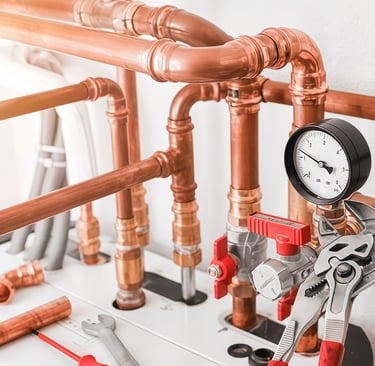Understanding the Core Components of a Medical Gas Pipeline System
11/13/20252 min read


Introduction to Medical Gas Pipeline Systems
A medical gas pipeline system (MGPS) is a critical infrastructure within hospitals, functioning as the silent yet vital delivery mechanism for essential gases such as oxygen, nitrous oxide, and medical air. By ensuring reliable and precise supply of these gases, MGPS allows healthcare practitioners to focus on patient care, knowing that the necessary gas supply is consistently available.
Key Components of Medical Gas Pipeline Systems
Understanding the core components of an MGPS is crucial for healthcare facilities aiming for optimal performance. Here are the fundamental elements:
1. Source Equipment
The journey of medical gases begins at the source equipment. This is where bulk gases are stored and prepared for distribution throughout the hospital. Equipment such as gas cylinders or liquid storage tanks plays a vital role in ensuring that the gases remain available and can be delivered safely into the pipeline network.
2. Pipeline Network
The backbone of the MGPS is the pipeline network, which encompasses a series of pipes that transport gases from the source equipment to various points across the hospital. This network is typically constructed from materials that are both durable and resistant to corrosion, ensuring the longevity and reliability of the gas supply.
3. Zone Valve Boxes
Zone valve boxes serve as control hubs within the pipeline network. They are strategically located throughout the hospital, allowing healthcare teams to isolate sections of the pipeline during maintenance or in emergency situations. By doing so, zone valve boxes ensure that patient care can continue without disruption, while also maintaining safety protocols.
4. Alarm Panels
Safety is paramount in healthcare settings, and alarm panels are key components of an MGPS that enhance safety measures. These panels monitor the status of the gas supply and alert medical staff in the event of any malfunctions or drops in gas pressure. This proactive approach helps to prevent any potential risks to patient safety.
5. Terminal Units
Finally, terminal units are the endpoints of the medical gas pipeline system. These outlets provide healthcare professionals with easy access to the gases needed for patient care. Whether found in operating rooms or ICU settings, terminal units are designed to facilitate quick and efficient delivery of critical gases, ensuring that the needs of patients are met promptly.
Conclusion
In conclusion, every component of a medical gas pipeline system is integral to a hospital's operation. At Medevices, we specialize in engineering MGPS solutions that prioritize precision, safety, and compliance. Our focus on these core components ensures that healthcare facilities can deliver seamless patient care—from the ICU to the operating theater. Remember, in the realm of healthcare, every connection truly matters.
To learn more about our solutions and how we can help your hospital function seamlessly, visit our website at Medevices.
Services
© 2024. All rights reserved.
Products


We're Making it easier to find Better Medical Devices
Find us on Map:
Contact Information
Phone: +91 9029457428 | +91 9833236604 | +91 7506374381
Email : medevices2018@gmail.com | sales@medevices.in
